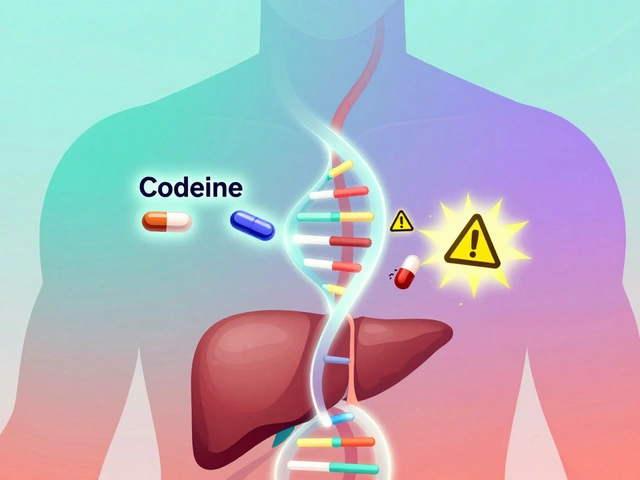Bacterial Infection is an invasion of harmful bacteria that multiply in the body, causing symptoms ranging from mild skin irritation to life‑threatening sepsis. While modern medicine has made many infections treatable, the best outcome still comes from stopping them before they start. Below you’ll find proven, everyday steps to prevent bacterial infections, plus clear guidance on what to do if one slips through the cracks.
What Exactly Is a Bacterial Infection?
In simple terms, a bacterial infection occurs when bacteria-single‑cell organisms that thrive in warm, moist environments-overcome the body’s natural defenses. Common culprits include Staphylococcus aureus, Escherichia coli, and Streptococcus pneumoniae. These microbes can enter through cuts, the respiratory tract, contaminated food, or even the urinary system.
Key factors that increase risk are:
- Compromised immune system (diabetes, chemotherapy, age)
- Poor hygiene habits
- Improper food handling
- Overuse or misuse of antibiotics
Why Prevention Outweighs Treatment
Every year, the World Health Organization reports over 2 million deaths worldwide linked to antibiotic‑resistant bacteria. In Australia, hospital‑acquired infections affect roughly 1 in 20 patients, adding extra weeks of hospital stay and hefty costs. Preventing infections not only saves lives-it reduces the pressure that drives antibiotic resistance, keeping our medicines effective for future generations.
Core Strategies to Prevent Bacterial Infections
Below are the six most effective habits you can adopt today.
- Hand Hygiene - Wash hands with soap for at least 20 seconds after using the bathroom, before meals, and after touching pets. If soap isn’t available, a hand sanitizer with ≥ 60% alcohol works well. Hand hygiene cuts transmission of skin and respiratory bacteria by up to 90%.
- Vaccination - Vaccines such as the pneumococcal, Haemophilus influenzae type b, and pertussis shots protect against bacterial pathogens that cause pneumonia, meningitis, and whooping cough. Keep your immunisation schedule up to date, especially if you travel.
- Food Safety - Cook meats to the recommended internal temperature (e.g., 165 °F/73 °C for poultry). Store leftovers within two hours, and rinse fruits and vegetables under running water. Food safety prevents food‑borne illnesses like salmonella and E. coli.
- Wound Care - Clean cuts with mild soap, apply an antiseptic, and cover with a sterile bandage. Change dressings daily and watch for redness or pus, signs of infection.
- Safe Water - Use filtered or boiled water for drinking and preparing infant formula. In areas with unreliable supply, a point‑of‑use UV purifier adds an extra layer of protection.
- Responsible Antibiotic Use - Only take antibiotics prescribed by a qualified professional, finish the full course, and never share medication. Misusing antibiotics fuels antibiotic resistance, making future infections harder to treat.

Quick Comparison of Prevention Methods
| Strategy | Effectiveness | Ease of Implementation |
|---|---|---|
| Hand Hygiene | High (≈90% reduction) | Very Easy |
| Vaccination | Very High (pathogen‑specific) | Easy (once‑off visits) |
| Food Safety | Medium‑High | Moderate (cooking time) |
| Wound Care | High | Easy (basic supplies) |
| Safe Water | High | Variable (depends on source) |
| Responsible Antibiotic Use | Indirect (prevents resistance) | Easy (follow prescription) |
Boosting Your Immune System Naturally
A robust immune system acts as the first line of defense against bacterial invaders. Here are lifestyle tweaks that genuinely help.
- Balanced Nutrition - Prioritise vegetables, lean proteins, whole grains, and healthy fats. Vitamin C, zinc, and selenium are especially important for white‑blood‑cell function.
- Probiotics - Fermented foods like yoghurt, kefir, and kimchi nurture a healthy microbiome. A diverse gut flora can outcompete pathogenic bacteria.
- Regular Exercise - Moderate activity (150 min/week) improves circulation, allowing immune cells to patrol the body more efficiently.
- Quality Sleep - Aim for 7‑9 hours. Sleep deprivation lowers the production of cytokines, proteins essential for fighting infection.
- Stress Management - Chronic stress spikes cortisol, which suppresses immunity. Practices like mindfulness, deep breathing, or a short walk can keep stress in check.
What to Do If You Suspect an Infection
Early recognition can prevent complications.
- Identify common symptoms: fever, redness, swelling, pain, pus, or unexplained fatigue.
- Document the onset date, any recent injuries, and whether you’ve been in close contact with sick individuals.
- Contact a healthcare professional promptly-especially if you have a chronic condition or are pregnant.
- If prescribed antibiotics, take them exactly as directed. Do not stop early, even if you feel better.
- Support recovery with rest, hydration, and the immune‑boosting habits listed above.
Never self‑diagnose serious infections like cellulitis, pneumonia, or urinary tract infections. Timely medical attention reduces the risk of hospitalization.

Common Pitfalls & Myths
Even well‑meaning people can slip into habits that promote bacterial growth.
- Myth: “Antibiotics cure any infection.” Fact: Antibiotics target bacteria only; they do nothing against viral illnesses and can cause side‑effects.
- Myth: “Hand sanitizer replaces handwashing.” Fact: Alcohol gels don’t remove physical dirt and are less effective against certain pathogens like norovirus.
- Myth: “If I feel fine, I don’t need to finish my prescription.” Fact: Incomplete courses leave surviving bacteria that may develop resistance.
- Myth: “Natural remedies are always safe.” Fact: Some herbal supplements interact with antibiotics, reducing their efficacy.
Key Takeaways
- Hand hygiene, vaccination, and proper food handling are the three most powerful prevention tools.
- Maintain a healthy immune system with balanced nutrition, probiotics, sleep, and regular exercise.
- Use antibiotics responsibly; finish the full course and never self‑prescribe.
- Recognise early infection signs and seek professional help quickly.
- Dismiss myths-rely on evidence‑based practices to keep bacterial threats at bay.
Frequently Asked Questions
How long does it take for hand sanitizer to kill bacteria?
Alcohol‑based sanitizers work within 15‑30 seconds. For maximum effect, spread the gel over all hand surfaces until dry.
Can probiotics prevent bacterial infections?
Probiotics won’t stop every infection, but a healthy gut microbiome competes with harmful bacteria, lowering the risk of gastrointestinal infections and supporting overall immunity.
What are the signs of a serious bacterial skin infection?
Rapidly spreading redness, increasing pain, swelling, warmth, pus, or fever are red flags. Seek medical care immediately.
Is it safe to take antibiotics for a cold?
No. Colds are caused by viruses, so antibiotics provide no benefit and contribute to resistance.
How often should I replace my toothbrush to avoid bacterial buildup?
Replace it every three months, or sooner if the bristles become frayed. Rinse thoroughly after each use and store upright to dry.




nitish sharma on 18 October 2025, AT 18:14 PM
Implementing consistent hand hygiene is a cornerstone of infection control; washing for at least twenty seconds with soap eliminates the majority of pathogenic bacteria. Additionally, staying up to date with vaccinations provides a targeted defense against specific bacterial threats. Proper food preparation-cooking meats to recommended temperatures and washing produce-further reduces exposure. Prompt wound care, including cleaning and covering cuts, prevents bacterial colonisation. Lastly, adhering strictly to prescribed antibiotic courses curtails resistance development. By integrating these habits into daily routines, individuals greatly diminish their infection risk.